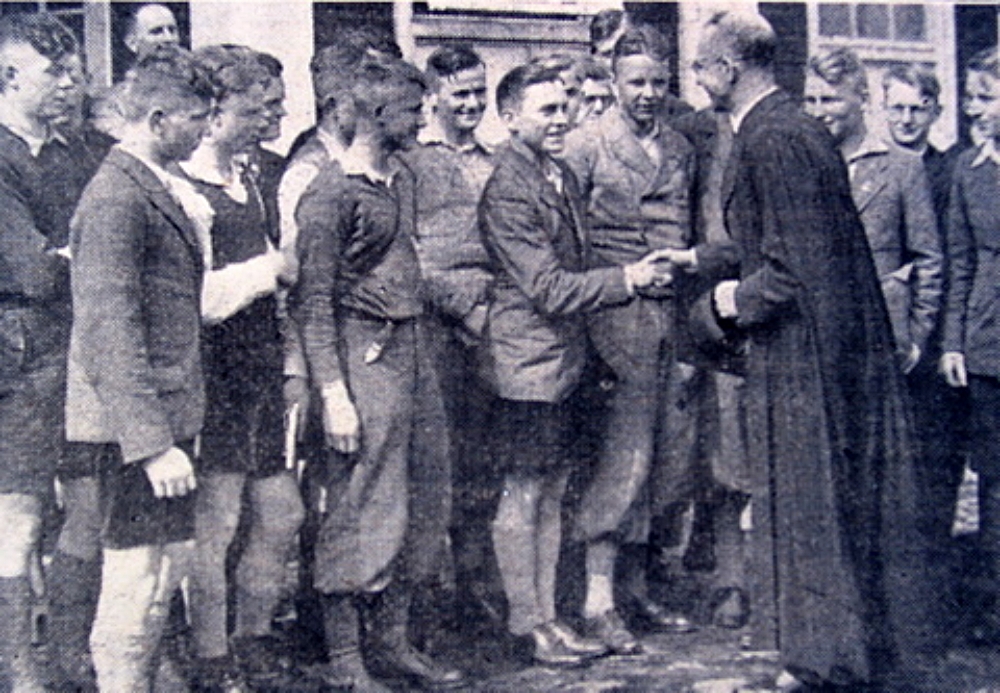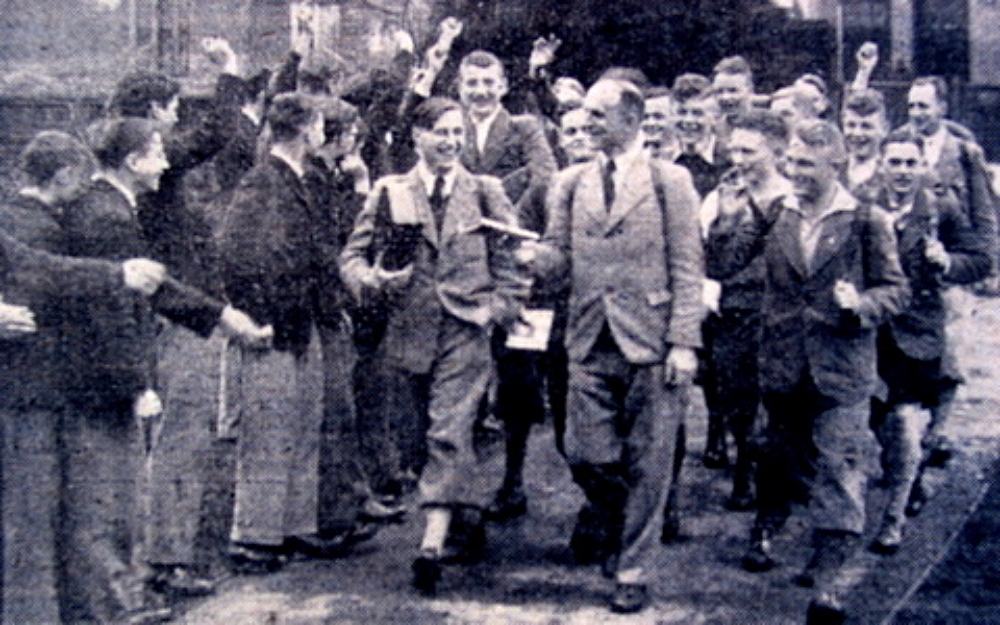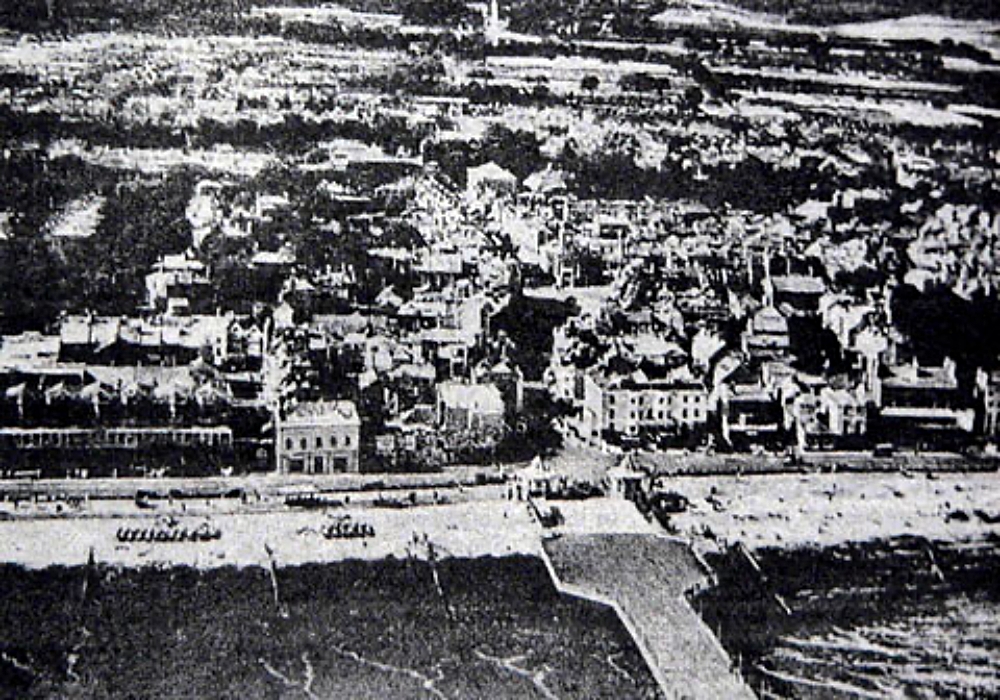When the Nazis came to Worthing
THURSDAY, March 26, 1936, and the floor of Worthing High School for Boys gymnasium, set within the quadrangles of the Broadwater Road site, resounded to plimsolled feet and the thud of pupils vaulting the “horse”.

This competitive display of gymnastics from 71 years ago takes on an ominous note, however, when we discover that half the young gymnasts were ardent members of the Hitler Youth organisation. In other words, young Nazi warriors in the making. Freddie Feest takes up the story . . .
WHY were these young Nazi idealists visiting a Worthing school just as the clouds of war were gathering over Europe for the second time in a quarter-century and the threat of conflict between their country and ours appearing almost inevitable?
There is no doubt that the headmaster of Worthing High School for Boys, Mr R.G. Martin, had been much impressed by the military precision and discipline of German youth when a group of his pupils visited several schools in Germany with their production of Shakespeare’s “Twelfth Night” a year earlier.
Martin responded by inviting a party of 15 young Germans to Worthing High School for Boys for a reciprocal visit the following year, perhaps not appreciating that all would be members of the Hitler-Jugend (Hitler Youth Organisation) a paramilitary organisation of the Nazi party with the objective of producing “Aryan supermen” for the German armed forces.
It has since been well documented that there were ulterior motives for most such visits and that German youth with strong Nazi-influenced motivation were surreptitiously – though with various degrees of success and reliability – collecting information, documents and photographs during their tours that might prove invaluable when the time came for Nazi forces to carry out an invasion of that country.

So, had R.G.Martin been duped by the Nazi propaganda machine into believing such a visit was merely culturally inspired? Possibly. Certainly, according to several former pupils, their headmaster and at least one other teacher involved with the trip to Germany were “greatly impressed by and demonstrably sympathetic to” many of the Nazi ideals projected during the two-way visits.
Ostensibly, the German visitors immediately made firm friends with their young Worthing hosts. According to a contemporary newspaper report on the visit, “controversies and quarrels between statesmen and diplomats were forgotten”.
The German boys were making a fortnight’s tour of England with a play called Der Unsichtbare Elefant (The Invisible Elephant). As the 1936 reporter described them: “They were finely set-up lads, clad mostly in shorts, stout hiking boots and ski caps and pupils of the Realgymnasium at Soest, Westphalia.
“The visitors, mostly members of the Hitler Youth Organisation, ‘stripped’ exceedingly well, were far more burly than the average Worthing boys and gave a splendid display of gymnastics showing an almost military precision in their work . . .”
He did add: “Despite their physical superiority, however, the German boys lacked the suppleness of the Worthing youngsters.”
Later, the German visitors toured Worthing town hall with the mayor, who told them: “I hope when you go back to your countrymen, you will prove to them that we, in, England do extend the hand of friendship. We don’t want to go back to the old days.”

The German headmaster, Dr Schulte-Areucks, dutifully declared that the Town Hall, and especially the Assembly Hall, were the finest he had seen. “By coming to Worthing,” he said, “we have discovered one thing.
“England is not only a practical country but is also a country of fine and good taste. Permit me to thank you for showing me this side of your national character.”
Mr Martin replied with words that, 71 years later, may at the very least sound naïve. “We have a deep debt of gratitude to Germany. Those of us who went from Worthing to North Germany were received with the greatest friendship and open-handed generosity.”
Three years later, Britain and Germany were fighting each other in the bitter struggle for survival that we all know as World War Two. Not until that was nearing its end was evidence uncovered pointing to the possibility that the schoolboy “cultural exchange” in the mid-1930s may have had a more sinister purpose than was evident at the time.
Photographs of Worthing – some snapshots taken by “tourists” and others in postcard form, evidently purchased in local shops before the war – were found in Hitler’s master plans for the invasion of England in 1940, captured by the Allied forces soon after D-day.
The plans revealed that Worthing would have been one of the main landing points for the German invasion forces and the pictures were laid out as a guide for troops when they arrived.
One cannot help wondering how many of those snapshots were taken – or postcards purchased and sent home – by those members of the Hitler Youth during their visit to Worthing Boys’ High School.
Or if any of the boys ever met again as adversaries during the heat of battle that was soon to follow.